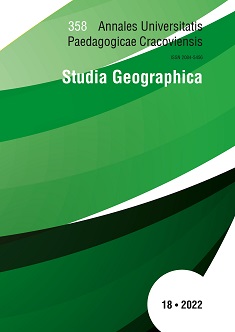Tourist attractiveness on the example of Lake Como
DOI:
https://doi.org/10.24917/20845456.18.11Abstract
The tourist attractiveness of a given place, region or other area results from the number, quality, and variety of offered goods and services. The concept is the basis of all tourist activity, influencing the intensity of tourist traffic and determining destinations and choices of tourists. The aim of the author was to present the results of enquiries and the analysis of secondary materials relating to the tourist attractiveness of Lake Como. The selected body of water is perceived as attractive due to the landscape of the lake and the highest mountain range of the European continent surrounding it. The site in the richest region of Italy, that of Lombardy, favours the development of tourism on the lake due to good tourist infrastructure and transport accessibility, too. The most attractive destinations in terms of a developed tourist function are Como and Bellagio, which offer a well-developed accommodation base.
References
Chudy-Hyski, D. (2006). Ocena wybranych uwarunkowań rozwoju funkcji turystycznej obszaru. Infrastruktura i ekologia terenów wiejskich, (2/1).
Cichocka, I., Krupa, J. (2017). Atrakcyjność turystyczna miasta Przemyśla w opinii mieszkańców oraz turystów. Ekonomiczne Problemy Turystyki, 38, 115-132.
Czerwiński, J. (2007). Podstawy turystyki. Stowarzyszenie „Wspólnota Akademicka”.
Duda-Gromada, K. (2009). Turystyka jeziorna - nowa forma turystyki. Prace i Studia Geograficzne, 42, 89-101.
Gołembski, G., (2002). Kompendium wiedzy o turystyce. Warszawa: PWN.
Hendel, M. (2016). Przydatność wskaźników funkcji turystycznej w ocenie rozwoju turystycznego obszaru na przykładzie gminy Ustroń. Zeszyty Naukowe. Organizacja i Zarządzanie/Politechnika Śląska, 87, 157-170.
Kaczmarek, J., Stasiak, A., Włodarczyk, B. (2005). Produkt turystyczny. PWe, Warszawa, 74.
Kowalczyk, A., Derek, M. (2010). Zagospodarowanie turystyczne. Warszawa: Wydawnictwo Naukowe PWN.
Kulczyk, S. (2014). Atrakcyjność turystyczna krajobrazu-przykłady podejścia systemowego. Turystyka kulturowa, 4, 6-15.
Kurek, W. (2008). Turystyka. Warszawa:Wydawnictwo Naukowe PWN.
Kurek, W. (2012). Regiony turystyczne świata, cz. 1. Warszawa: PWN.
Makowski, J. (2018). Geografia fizyczna świata. Warszawa: Wydawnictwo Naukowe PWN.
National Geographic Traveller (2022, 14 października). Pozyskano z: https://www.national-geographic.pl/traveler/artykul/jezioro-como-uwielbiaja-gwiazdy-wlosi-i-turysci-na-czym-polega-fenomen-tego-miejsca
Rogalewski, O. (1967). Zagospodarowanie turystyczne. Polskie Towarzystwo Ekonomiczne. Zakład Szkolenia Ekonomicznego. Dyrekcja Wrocławska.
Wikipedia (2022, 18 października). Pozyskano z: https://pl.wikipedia.org/wiki/Lago_di_Como
Wikipedia (2022, 25 października). Pozyskano z: https://pl.wikipedia.org/wiki/Como
Downloads
Published
Issue
Section
License
The submission of a paper to be published is synonymous with an agreement to transfer the copyright free of charge from the author to the publisher. The author also agrees to permit the publisher to publish the paper in printed form, open access online form, digital library form and other digital platforms with which the publisher has or will have a publishing agreement. Furthermore, the author agrees to not limit the number of copies that may be printed or issued by the publisher. In the case of co-authored papers, it is assumed that the corresponding author is authorized to represent the remaining co-authors in this respect. Authors are requested to sign a copyright declaration.

